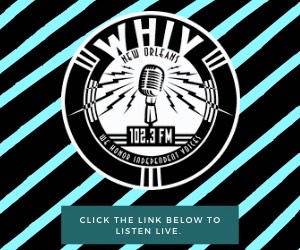MaCCNO (The Music and Culture Coalition of New Orleans) is thrilled to announce the launch of FrenchmenNotes.com, a website that tells the story of Frenchmen Street. This is an ongoing project between MaCCNO’s Program and Research Coordinator, Hannah Kreiger-Benson and writer/bartender/independent researcher Laura DeFazio tells the story of Frenchmen Street as a musical incubator and destination from its earliest days through the beginning of the pandemic using “interviews, anecdotes, numbers, figures, and other research relating to its rich, complex history and cultural importance.”
Members of the public are invited to make their own contributions by visiting the site in order to tell their own stories, as well. MaCCNO personnel state that the website will be continuously updated and invite members of the community to stop by and share their stories of the historic street 24/7. Jake Clapp of Nola.com reports that in July, DeFazio and Kreiger-Benson launched Frenchmen Notes, the website collecting interviews, stories, data and research related to Frenchmen Street’s history and cultural impact on New Orleans. Clapp writes, “The site is especially concerned with the area’s “modern” history from 1976 — when The Dream Palace opened at 534 Frenchmen — until 2020, although they hope to continue the project into 2021, ’22 and the future.”
In order to participate, Frenchmen Street folks are invited to email DeFazio and Kreiger-Benson at [email protected] to share their own stories.
Britannica.com writes, “The cultural life of New Orleans is a synthesis of contributions by both whites and Blacks. The white American heritage—with its roots in French-speaking Cajun society—is reflected in the business and commercial life of the city, while the immigrant heritage—Irish societies, German Oktoberfests, Italian St. Joseph’s Day altars—adds ethnic color to urban conformity. The African American heritage is particularly rich. In antebellum days, free persons of color were musicians, poets, journalists, business entrepreneurs, and landlords. Both Black freemen and slaves were renowned for their craftsmanship in such trades as bricklaying, iron grillwork, and carpentry. The contribution of African American musicians to the birth of jazz out of Black blues and “field hollers” and white dance tunes and hymns is well known.”




